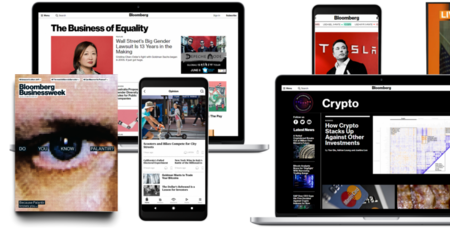Reports of Netflix’s Wednesday and HBO’s White Lotus actors pushing through Covid raise critical questions about workplace health and safety.
(Bloomberg) — The hit Netflix show Wednesday, an Addams Family spinoff, has catapulted lead Jenna Ortega to internet stardom.
Turns out Ortega pushed through a bout of Covid to film the eccentric dance scene that’s gone viral on social media.
“It was awful to film,” Ortega told London-based pop culture site NME last month.
“I had woken up with the body aches. I felt like I’d just been hit by a car,” she said. “They were giving me medicine between takes.” Strict Covid protocols were followed and once the test came back positive Ortega was removed from the set, an MGM spokesperson said in a statement. Even after that effort, Ortega wasn’t satisfied with the final cut.
“I’m like, oh man… I probably wasn’t at my best when I did that,” she said in the NME interview.
Ortega’s not alone. Simona Tabasco, who plays Lucia in HBO’s White Lotus, told Cosmopolitan last month that she also battled Covid while auditioning for the part, opting to persevere through illness rather than risk advancing her career.
Both episodes raise the question: How should we handle Covid in the workplace in a world where spreading the illness could always be a concern?
As infections of Covid-19, flu and RSV rise steadily across the US, cities like New York and Los Angeles are once again recommending masks indoors.
The advisory is especially salient for those over 65 or who are immunocompromised, the New York City Health Commissioner said, and those who aren’t fully vaccinated — about 30% of the US population, according to data from the University of Oxford’s Our World in Data project.
Meanwhile, pandemic precautions have been relaxed or done away with entirely at many workplaces across the country as employees are expected to return to work in person. These policy changes speak to the power of vaccines and therapeutic medicines to keep people out of hospitals, said Joseph Allen, a professor at the Harvard T.H.
Chan School of Public Health. “I don’t think we should be forever masking and forever testing,” he said. “That was part of the emergency of Covid.” Instead, he said, employers should upgrade their buildings’ ventilation and filtration systems to limit the spread of pathogens.
Regardless, the number one rule will always stand: “People should stay home when they’re sick,” Allen said.
The US Centers for Disease Control and Prevention’s guidelines instruct people to isolate if they have symptoms and suspect Covid, even if they haven’t gotten test results back yet. The CDC’s counsel suggests a five-day quarantine if you test positive.
“It used to be the case that people would see it as a badge of honor to work through a cold,” Allen said. “But nobody wants to get sick when they go to work — when people cough now in an office, everyone turns to look.”
The major barrier to following that advice, of course, is the lack of guaranteed paid sick time in the US.
One in five American workers doesn’t have access to paid sick leave, according to data from the US Bureau of Labor Statistics, forcing many to choose between their health (and their coworkers’ health) and a paycheck.
The situation is especially acute for low-wage workers, who are most likely to need the money and whose employers are least likely to provide the benefit.
Employers must also encourage staff to get Covid and flu vaccines and stay up-to-date with boosters, said Stacey Lee, a professor at Johns Hopkins Carey Business School.
And if someone isn’t feeling well and absolutely insists on coming to the office anyway, she said, at the very least they should wear a high-quality mask.
While for many Covid may no longer be a pressing concern, for immunocompromised people and their families and caregivers, the dangers are still very real.
While those at high risk of complications from Covid are generally eligible for accommodations from their employer, like access to remote work, caregivers are not, Lee said. At least 7 million US adults are immunocompromised, according to the American Medical Association.
Best practices notwithstanding, Lee said she’s seen observance of precautions drop precipitously.
“Unfortunately, I think that there has been a huge rush to get back to normal,” she said. Since most people have been at least partially vaccinated and infection rates aren’t dominating the front page, Covid isn’t seen as as much of a threat.
In some cases, she’s seen people go back to work after just one day of quarantine following a positive test.
“I don’t believe that the public is in the headspace now of the safety precautions that we saw over the past two years,” she said. “Some of the protocols and norms that we were observing before just aren’t being observed in the workplace anymore.”
More stories like this are available on bloomberg.com
©2022 Bloomberg L.P.











